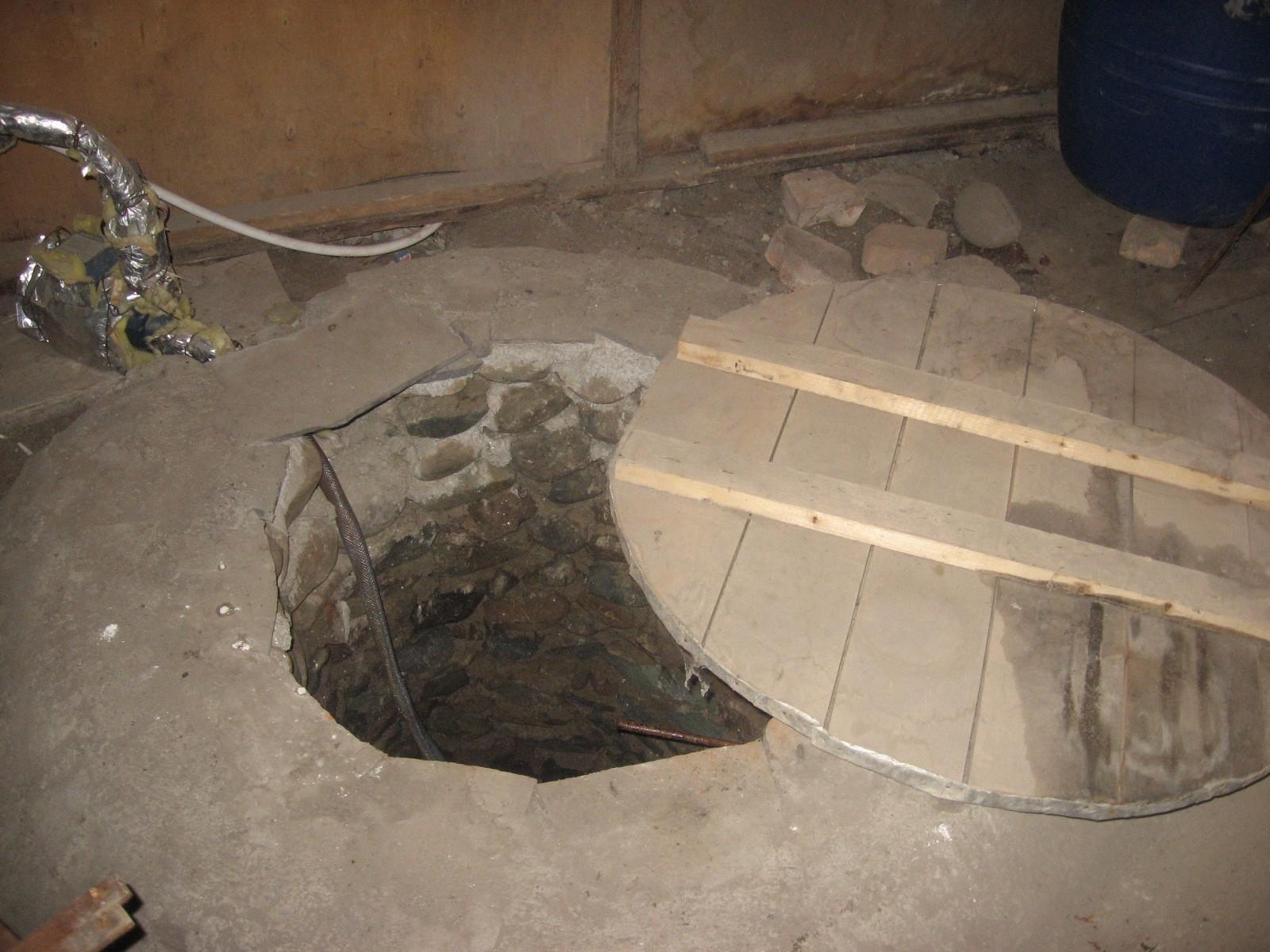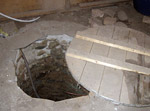
Mystery Water: Qarkop Residents Drink from Untested Wells
 Residents Have Dug Wells Close to Polluted Debed River The village of Qarkop, population 400, lies on the banks of the Debed River in northern Armenia. After the collapse of the Soviet Union, local residents were deprived of a functioning drinking water system. They turned to wells for their water. They dug the wells some fifty meters from the river. Residents living next to the Debed sunk about ten wells. Most are located in their garages.
Residents Have Dug Wells Close to Polluted Debed River The village of Qarkop, population 400, lies on the banks of the Debed River in northern Armenia. After the collapse of the Soviet Union, local residents were deprived of a functioning drinking water system. They turned to wells for their water. They dug the wells some fifty meters from the river. Residents living next to the Debed sunk about ten wells. Most are located in their garages.
“Many residents have also rigged a system bringing water from the well into their homes. If the water stagnates a few days, it starts to smell and go bad,” said Shoushan Khoudinyan. “This is our family’s well. We use it as clean water. Most residents get their drinking water from the wells. Some people have a preference, saying that the water from a certain well is better quality than water from another well. We add salt and sometimes chlorine to disinfect them. But we don’t know how much chlorine to use. I just saw how much they put in once when some workers came and do the same, says Yelizaveta Ananyan, whose well is located in the car garage. During the Soviet era, they would bring in water by the wagon load. “Who knows if one wagon load of water would last for a month or fifteen days,” said Mrs. Ananyan. She assumes that the water is filtered in the ground and that they are left with clean water, even though she spoke about the environmental problems associated with the Debed River. “The only municipal waste pipe sends effluents right into the river. Once I saw with my own eyes how autopsy wastes are dumped into the river. Where else can they dump the stuff?” she asked. Residents getting their water from wells pay no water tax. “We built the wells ourselves and use the water as ground-filtered. If the river water is cloudy, the well water is clear, so it must be filtered, right? But we can’t say how healthy it actually is,” said Mrs. Ananyan, adding that most residents of Qarkop die from cancer-related illnesses. “Other illnesses like heart problems are unheard of here. Should we chalk it all up to the water? People round here use the river to water everything. What else can they use?” Yelizaveta’s daughter Liana, who was listening to our conversation from the balcony, added that one year there was a high number of deaths from cancer and that residents sacrificed a calf to end the blight. Armen Saghatelyan, Director of the Center for Ecological-Noosphere Studies at National Academy of Sciences, was in Qarkop when we visited. He was conducting environmental research on the fields and vegetable gardens irrigated by Debed River water. Regarding the quality of the water from the wells, Mr. Saghatelyan said that as a general rule wells sunk 500 meters from nearby rivers can be used by the populace. “As regards filtration, the heavy metals found in well water are generally not filtered out. This fact can present some health risks.” He then took some water samples from the wells for testing.
 Videos
Videos Photos
Photos




Write a comment